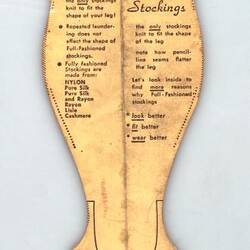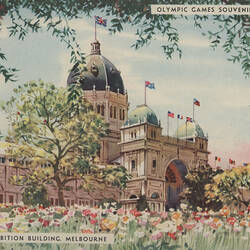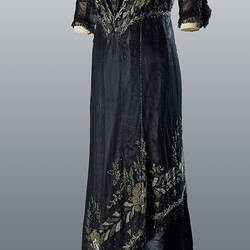The Royal Exhibition Building is a product of the optimism, enthusiasm and energy of the people of Melbourne in the late 19th century. In 1879, when the foundation stone was laid, Melbourne was an extremely prosperous city, basking in the wealth from the richest gold rush in the world. The future seemed unlimited, and Victorians wanted to publicise their achievements in an international exhibition.
The building was designed by Joseph Reed and erected in less than 18 months. The first exhibition opened on 1 October 1880. The excited crowd included many who had immigrated during the 1850's gold rush. They had seen Melbourne change from a scatter of wooden houses to a marvellous modern city. The new Exhibition Building, the largest building in Australia, was a symbol of their confidence in the future. The 1880-81 International Exhibition attracted entries from 33 countries and over a million visitors.
The boom times continued, and in 1888 at the Centennial International Exhibition, annexes full of displays covered the gardens north to Carlton Street, and people made 2 million visits.
The Opening of the First Federal Parliament of the Commonwealth of Australia on 9 May 1901 saw 12,000 people attend the ceremony in the Great Hall. The restored interior replicates the decorative scheme designed for that event.
In 1919, the building was used as a temporary hospital for Spanish Flu sufferers; from 1921-1925 the first Australian War Museum was housed there (the precursor to the Australian War Memorial); between 1941 and 1945 the building was requisitioned by the RAAF No 1 Technical Training School; from 1949-1962 a migrant reception centre was housed in the grounds north of the great hall; and in 1956 weight liftingting, basketball and wrestling competitions were held as part of the Melbourne Olympics. Between these events the building has continued to be used for trade fairs, motor shows, balls, meetings, flower shows, examinations and rock concerts.
To mark its centenary in 1980, Princess Alexandra, cousin to Queen Elizabeth II, bestowed Royal title on the Exhibition Building. Its significance as the only surviving 19th century 'Palace of Industry' located in its original landscape setting, still used for events, saw the Royal Exhibition Building listed on the World Heritage Register in July 2004.
The Royal Exhibition Collection of well over 5,000 objects reflects all aspects of the building's history: objects displayed at the two great International Exhibitions; souvenirs; certificates and medals awarded to exhibitors and commissioners; invitations to concerts, balls and the opening of parliament: catalogues to the International Exhibition and museum displays. The collection also contains photographs of the building from the 1880s to the present day, and other pictorial reproductions including watercolours, postcards and lithographic prints.
More Information
-
Keywords
8 Hours Day Celebrations, Advertising, Agricultural Societies, Aquariums, Architecture, Art, Art Exhibitions, Art Fairs, Artworks, Assemblies, Australian Bicentenary, 1788-1988, Australian Centenary of Federation, 2001, Australian Federal Parliament Opening Ceremony, 1901, Australian Federation, 1901, Australian Military Forces, Boer War, 1899-1902, Building & Construction, Celebrations, Civic Mementoes, Commemorations, Commonwealth Heads of Government Meeting (CHOGM), Melbourne, 1981, Community Organisations, Conferences & Conventions, Economic Depression, 1890s, Entertainment, Exhibitions, Exhibitions: Melbourne International Centenary Exhibition, 1980, Exhibitions: Melbourne International Centennial, 1888-1889, Exhibitions: Melbourne International, 1880-1881, Exhibitions: Melbourne, All Australian Victorian Centenary, 1934, Flower & Garden Shows, Holiday & Travel Shows, Home Shows, Influenza Epidemic, 1919, International Motor Show, Keepsakes, Medal Presentations, Migrant Reception Centres, Motor Cycle Shows, Motor Shows, Museum History, National Trust, Olympic Games: Melbourne, 1956, Politics, Popular Culture, Postcards, Public Ceremonies, Public Gardens, Public Health, Royal Exhibition Building, Royal Exhibition Building Trustees, Royal Visits, Souvenirs, Sport, Tobacco Industry, Trade Exhibitions, Trade Fairs, Trade Shows, Victoria Centenary, 1934-1935, Women's Issues, World Fairs, World Heritage, World War I, 1914-1918, World War II, 1939-1945
-
Localities
-
Authors
-
Article types























